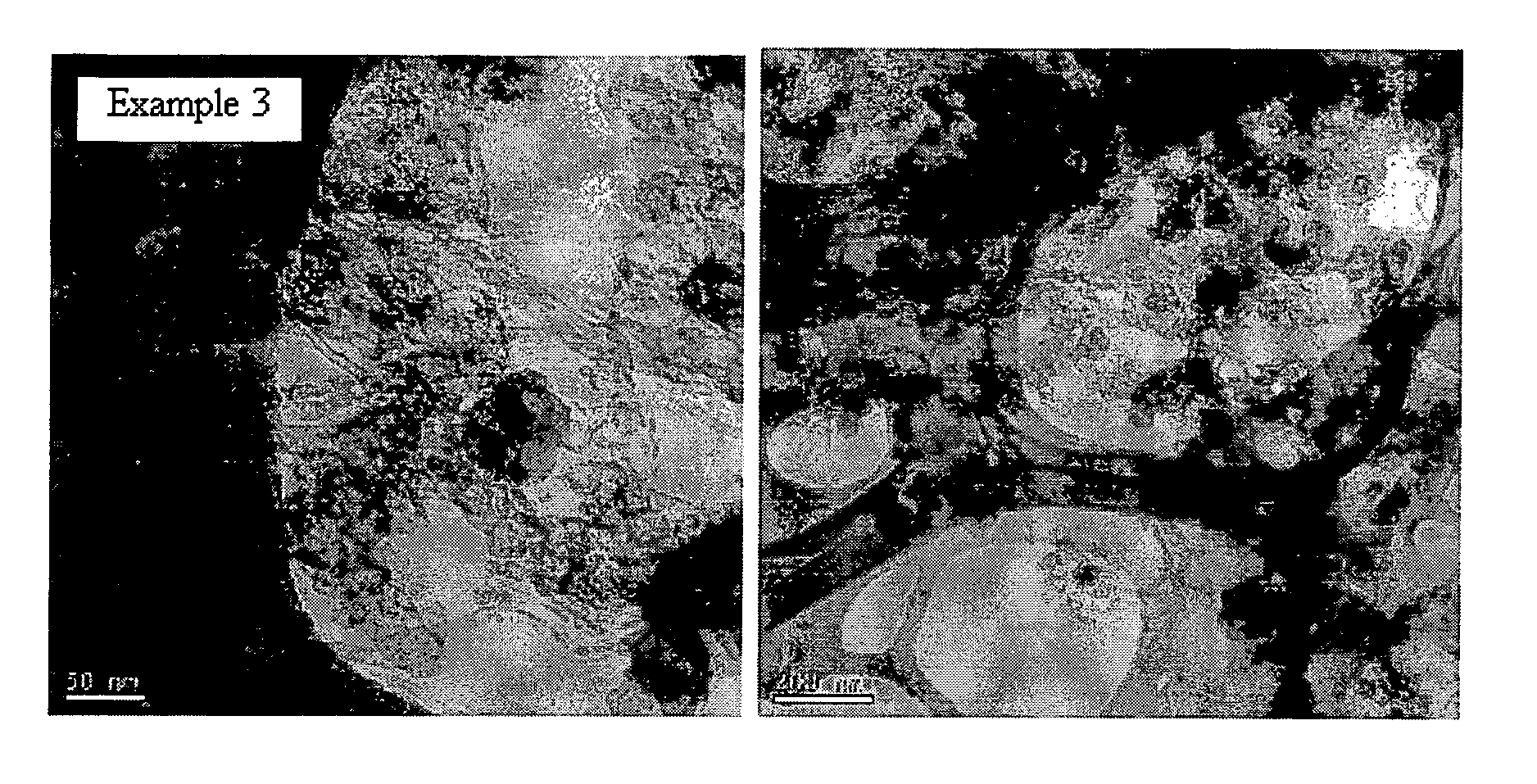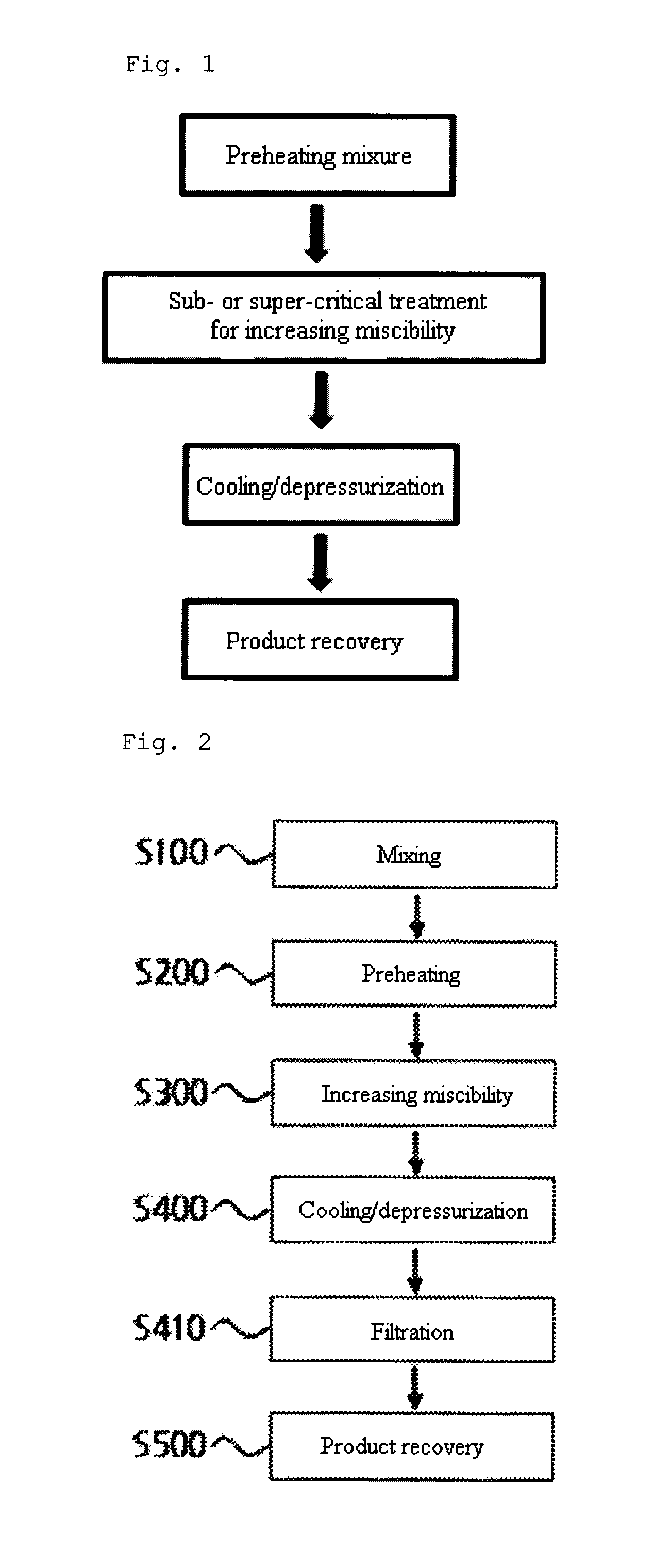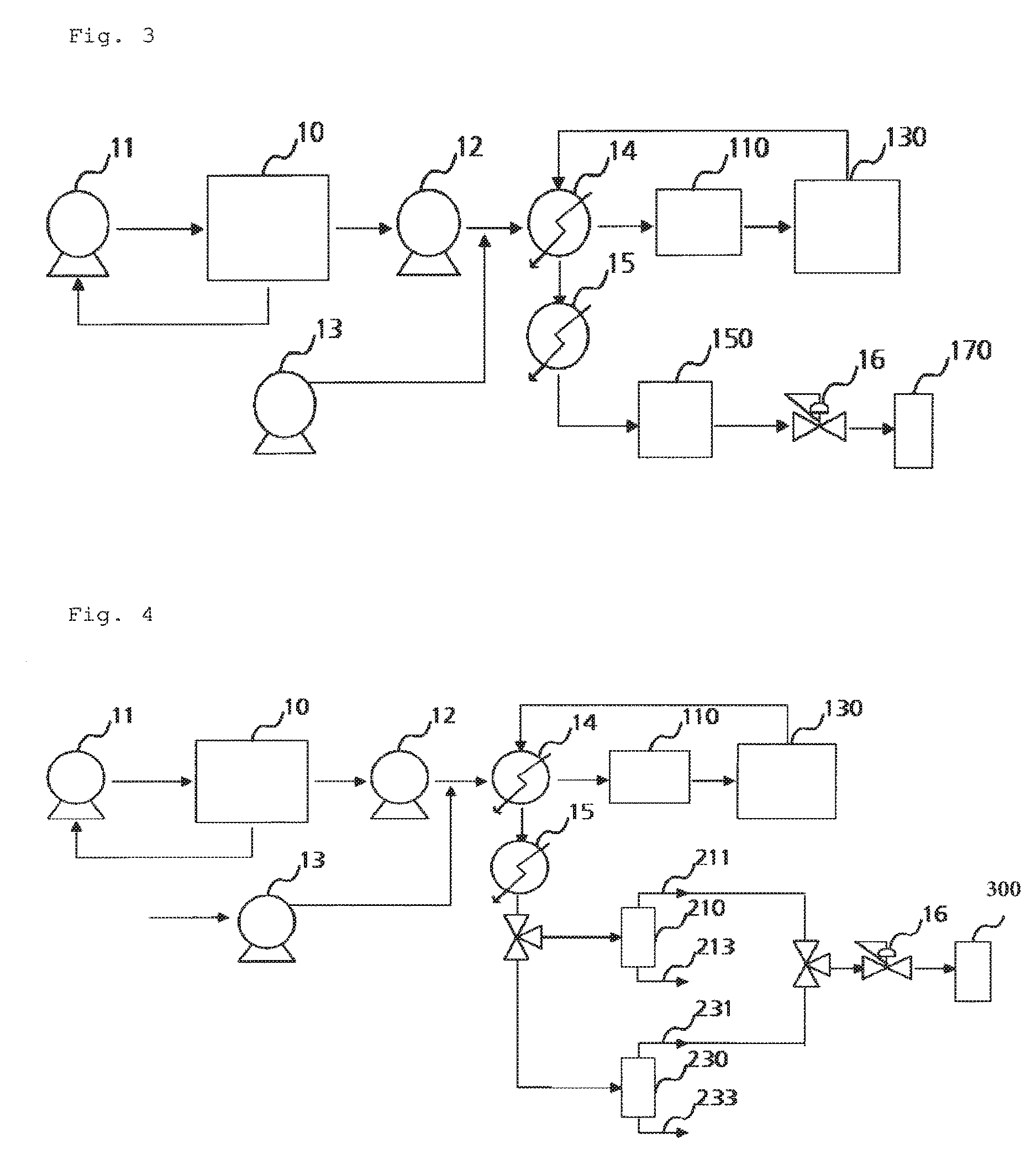Blending improvement carbon-composite having carbon-nanotube and its continuous manufacturing method and apparatus
a carbon nanotube and composite material technology, applied in the direction of non-metal conductors, bulk chemical production, conductors, etc., can solve the problems of degradation of the physical properties of the matrix, inability to form electroconductive flow, low intermiscibility of the resultant composite materials, etc., to improve conductivity, improve intermiscibility, and dispersibility and binding force excellent
- Summary
- Abstract
- Description
- Claims
- Application Information
AI Technical Summary
Benefits of technology
Problems solved by technology
Method used
Image
Examples
example 1
[0080]First, 10 g of multi-walled carbon nanotubes (Hanwha Nanotec Co., MWCNT) and 10 g of carbon black (Cabot Co., USA) are mixed with 980 g of distilled water through a circulation pump 11 to provide a mixture in a mixing unit 10. The mixture is introduced into a preheating unit 110 through a high-pressure injection pump 12 at a flow rate of 15 g / min. The resultant solution is passed through a heat exchanger 14 to the preheating unit 110 heated to 200-240° C.
[0081]Next, the preheated mixture is introduced into a reaction unit 130 to increase miscibility under sub-critical water at 300° C. and 230 atm to 250 atm, and then subjected to the sub-critical treatment. The resultant product having improved intermiscibility is transferred back to the heat exchanger 14, cooled preliminarily therein to 200° C., and then further cooled to about 25° C. through a cooler 15. In this manner, 19.9 g of a carbon nanotube composite material having improved intermiscibility is obtained in a continuou...
example 2
[0082]Example 1 is repeated, except that the temperature of the heat exchanger 14 is 350-370° C. during the preheating of the carbon nanotube composite material including the multi-walled carbon nanotubes and the carbon black, and the mixture is treated under super-critical water at a temperature of 400° C. to increase intermiscibility. In this manner, 19.7 g of a carbon nanotube composite material is obtained as a product.
example 3
[0083]Example 1 is repeated, except that the mixture of the multi-walled carbon nanotubes and the carbon black is further mixed with oxygen introduced to the front end of the heat exchanger 14 at a flow rate of 0.04 g / min in a vapor phase pressurized to 245-252 atm, before the mixture is introduced into the preheating unit 110. In this manner, 19.2 g of a carbon nanotube composite material is obtained as a product.
PUM
| Property | Measurement | Unit |
|---|---|---|
| diameter | aaaaa | aaaaa |
| aspect ratio | aaaaa | aaaaa |
| pressure | aaaaa | aaaaa |
Abstract
Description
Claims
Application Information
 Login to View More
Login to View More - R&D
- Intellectual Property
- Life Sciences
- Materials
- Tech Scout
- Unparalleled Data Quality
- Higher Quality Content
- 60% Fewer Hallucinations
Browse by: Latest US Patents, China's latest patents, Technical Efficacy Thesaurus, Application Domain, Technology Topic, Popular Technical Reports.
© 2025 PatSnap. All rights reserved.Legal|Privacy policy|Modern Slavery Act Transparency Statement|Sitemap|About US| Contact US: help@patsnap.com



